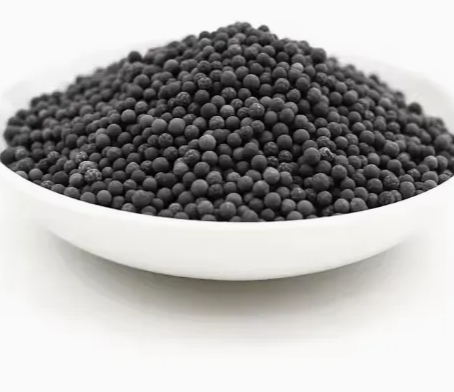
Palladium Catalysts Recycling
A palladium catalyst is a chemical catalyst that uses palladium (Pd) as its active component, typically supported on materials such as alumina, activated carbon, silica, or zeolite. It is widely used in various industries due to its excellent catalytic properties.Recycling methods include acid leaching, solvent extraction, high-temperature smelting, and electrolysis, which allow for the recovery and refining of palladium to a purity of 99.95% or higher.
- Parameter
- Related Questions and Answers
-
Name : Palladium Catalysts
-
Use : Catalyzing chemical reactions
-
Application Areas : Auto industry,Petrochemical industry,Pharmaceuticals and fine chemicals,Electronics Industry,Hydrogen energy and fuel cells,Environmental protection and waste gas treatment
-
Appearance and properties : Granular (powder, microsphere, granule) Carrier (honeycomb, mesh, coating) Solid block or coating film
-
Settlement Method : On-site payment
-
Recycling Type : Palladium recycling
-
Door-to-door recycling:worldwide
-
Customer service: Free content testing and door-to-door recycling
Palladium Graphite Recycling
Palladium graphite is a composite material composed of palladium (Pd) and graphite. Specific forms may include:
Palladium nanoparticles distributed in a graphite matrix
Palladium-graphite alloy or catalyst coating
Palladium graphite is a material composed of palladium (Pd) nanoparticles and graphene (or graphene oxide). Its typical structure includes palladium nanoparticles uniformly loaded on graphene sheets, or combined with magnetic materials (such as Fe₃O₄) to form a ternary composite material (such as Pd-Fe₃O₄/reduced graphene oxide nanocomposite). This structure combines the high catalytic activity of palladium with the high specific surface area, conductivity and stability of graphene, while the addition of magnetic components (such as Fe₃O₄) can realize the magnetic recovery properties of the material.
Palladium Carbon Catalyst Recycling
The recovery process leverages autoclave conditions to effectively extract palladium, with considerations for scale, efficiency, and environmental impact. Understanding the exact chemical reactions and conditions within the autoclave, as well as the comparative effectiveness of different recovery methods, is vital for optimizing palladium recovery and its industrial applications.
Search : Palladium Carbon Catalyst RecyclingWaste Palladium Carbon Recycling
Palladium on Carbon (Pd/C) is a supported palladium catalyst in which palladium metal is loaded onto high-surface-area activated carbon. It appears as a black or dark gray powder and is widely used in organic synthesis, pharmaceuticals, petrochemicals, and environmental protection. Pd/C is known for its high catalytic efficiency, stability, and recoverability, making it an essential catalyst in various industries.
Search : Waste Palladium Carbon RecyclingPalladium Acetate Recycling
Palladium acetate, also known as Palladium(II) acetate, is an organic acid salt compound of palladium, with the chemical formula Pd (CH3COO) 2. It is a colorless crystal that takes on a solid form at room temperature. Palladium acetate is soluble in organic solvents such as alcohols and ethers, but its solubility in water is relatively low., also known as Palladium(II) acetate, is an organic acid salt compound of palladium, with the chemical formula Pd (CH3COO) 2. It is a colorless crystal that takes on a solid form at room temperature. Palladium acetate is soluble in organic solvents such as alcohols and ethers, but its solubility in water is relatively low.
Search : Palladium Acetate RecyclingProduct Details
A palladium catalyst is a chemical catalyst that uses palladium (Pd) as its active component, typically supported on materials such as alumina, activated carbon, silica, or zeolite. It is widely used in various industries due to its excellent catalytic properties.
The main features and applications of palladium catalysts include:
Automotive Emission Control: Palladium catalysts are a key component in three-way catalytic converters (TWC), helping convert harmful gases such as carbon monoxide (CO), hydrocarbons (HC), and nitrogen oxides (NOx) into less harmful substances, reducing vehicle emissions.
Petrochemical Processing: Used in hydrogenation reactions, hydrodesulfurization (HDS), alkylation, and reforming processes to improve fuel quality and efficiency.
Organic Synthesis: Widely used in chemical and pharmaceutical industries for coupling reactions (e.g., Suzuki, Heck, and Sonogashira reactions) and selective hydrogenation processes.
Electronics Manufacturing: Applied in conductive pastes, electronic connectors, and circuit board manufacturing. Palladium plays a crucial role in high-end electronic components.
Pharmaceutical Industry: Used as a catalyst in drug synthesis and life science research.
New Energy Technologies: Essential in hydrogen fuel cell applications, improving energy conversion efficiency.
Palladium Catalyst Recycling
Spent palladium catalysts are valuable recycling materials due to their high palladium content. Common sources of palladium catalyst recycling include:
Spent automotive catalytic converters
Used petrochemical and chemical catalysts
Scrap electronic components and circuit boards
Laboratory waste and industrial residues
Recycling methods include acid leaching, solvent extraction, high-temperature smelting, and electrolysis, which allow for the recovery and refining of palladium to a purity of 99.95% or higher.
If you need to recycle spent palladium catalysts, please contact our professional recycling team. We operate our own refining facilities, eliminating middlemen and ensuring maximum returns for our customers. Our dedicated technical team provides one-on-one service, maintaining strict confidentiality throughout the recycling process.

